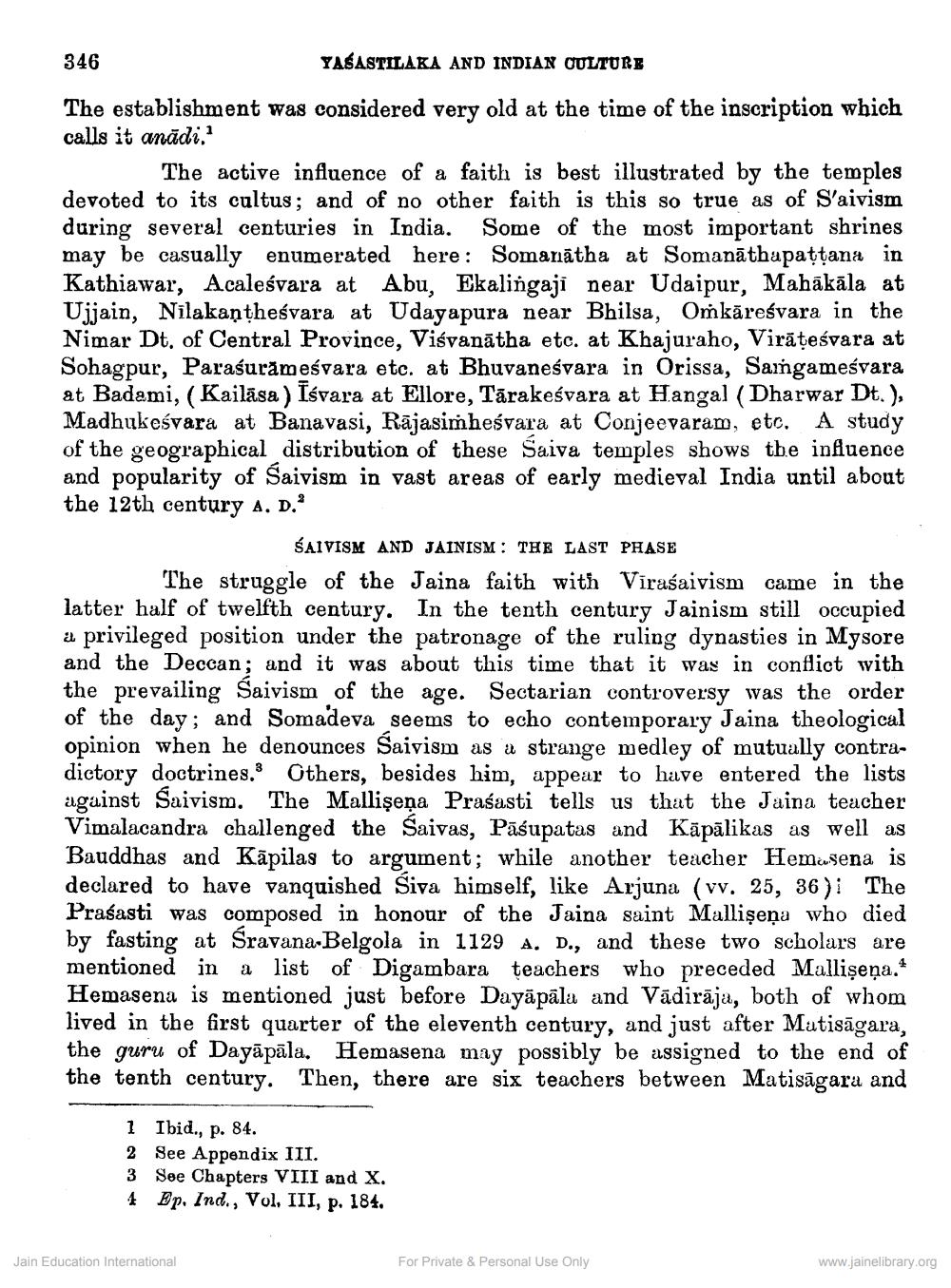________________
346
YAŠASTILAKA AND INDIAN CULTURE
The establishment was considered very old at the time of the inscription which calls it anādi."
The active influence of a faith is best illustrated by the temples devoted to its cultus; and of no other faith is this so true as of S'aivism during several centuries in India. Some of the most important shrines may be casually enumerated here: Somanātha at Somanāthapattana in Kathiawar, Acaleśvara at Abu, Ekalingaji near Udaipur, Mahākāla at Ujjain, Nilakantheśvara at Udayapura near Bhilsa, Omkāreśvara in the Nimar Dt. of Central Province, Visvanātha etc. at Khajuraho, Virăţeśvara at Sohagpur, Parasurameśvara etc. at Bhuvanesvara in Orissa, Saingameśvara at Badami, Kailasa) īśvara at Ellore, Tārakeśvara at Hangal (Dharwar Dt. ), Madhukeśvara at Banavasi, Rājasimheśvara at Conjeevaram, etc. A study of the geographical distribution of these Saiva temples shows tbe influence and popularity of Saivism in vast areas of early medieval India until about the 12th century A. D.*
GAIVISM AND JAINISM: THE LAST PHASE The struggle of the Jaina faith with Virasaivism came in the latter half of twelfth century. In the tenth century Jainism still occupied a privileged position under the patronage of the ruling dynasties in Mysore and the Deccan; and it was about this time that it was in conflict with the prevailing Saivism of the age. Sectarian controversy was the order of the day; and Somadeva seems to echo contemporary Jaina theological opinion when he denounces Saivism as a strange medley of mutually contradictory doctrines. Others, besides him, appear to have entered the lists against Saivism. The Mallişeņa Prasasti tells us that the Jaina teacher Vimalacandra challenged the Saivas, Pāśupatas and Kāpālikas as well as Bauddhas and Kõpilas to argument; while another teacher Hemusena is declared to have vanquished Siva himself, like Arjuna (vv. 25, 36 )i The Prasasti was composed in honour of the Jaina saint Mallişeņa who died by fasting at Sravana-Belgola in 1129 A. D., and these two scholars are mentioned in a list of Digambara teachers who preceded Mallişeņa.* Hemasena is mentioned just before Dayāpāla and Vădirāja, both of whom lived in the first quarter of the eleventh century, and just after Matisāgara, the guru of Dayāpāla. Hemasena may possibly be assigned to the end of the tenth century. Then, there are six teachers between Matisāgara and
1 Ibid., p. 84. 2 See Appendix III. 3 See Chapters VIII and X. 4 Bp. Ind., Vol. III, p. 184.
Jain Education International
For Private & Personal Use Only
www.jainelibrary.org




